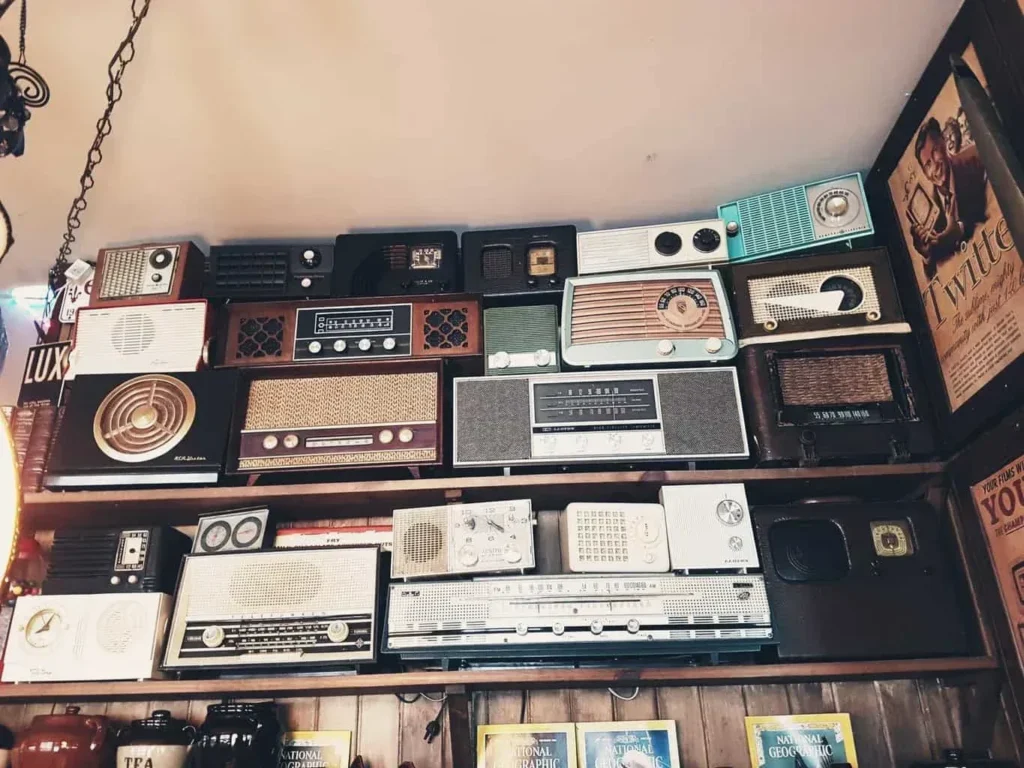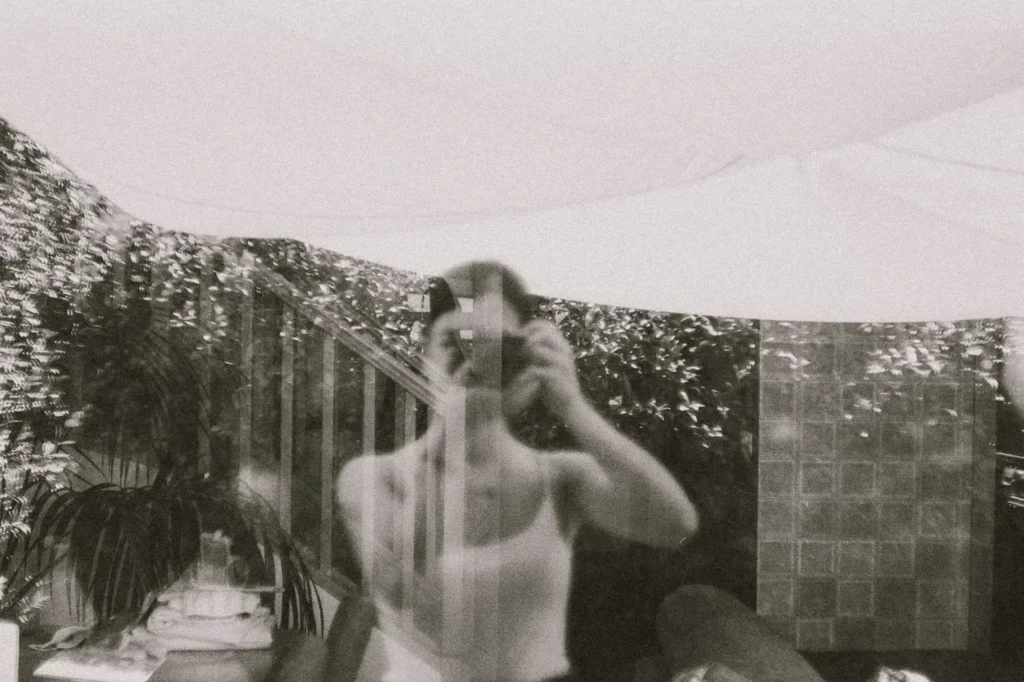Have you ever wondered why people use the term “retro”? We often hear it when describing old-fashioned styles or products that have made a comeback. But what exactly does retro mean, and why do we say it? In this article, we will explore the origins and meaning of the word retro, and delve into the reasons behind its popular usage in today’s culture. So, grab a cup of coffee and join us on this nostalgic journey as we uncover the fascinating phenomenon of retro.
Understanding the Term ‘Retro’
Definition of Retro
Retro is a term that refers to the nostalgic imitation or revival of styles, trends, and aesthetics from the past. It is characterized by the deliberate incorporation of elements that evoke a sense of nostalgia for a particular time period. The term ‘retro’ is commonly used to describe anything that is inspired by or reminiscent of a previous era, typically from the 20th century.
Historical Context of Retro
The concept of retro can be traced back to the mid-1960s when there was a growing interest in reviving and celebrating the aesthetics of the past. This fascination with bygone eras was fueled by factors such as the counterculture movement, a desire for self-expression, and a rejection of mainstream culture. People started to look back at earlier decades with a sense of longing and a yearning for the simplicity and charm they associated with those times.
Significance of Retro Culture
Retro culture holds great significance as it allows individuals to connect with the past and gain a deeper understanding of historical contexts. It serves as a visual representation of cultural evolution, reminding us of the trends, innovations, and societal shifts that shaped our present. Retro culture provides a bridge between generations, fostering conversations and a sense of shared experience. It offers a way to preserve and appreciate the aesthetics and values of the past while embracing the present.
Exploring the Retro Aesthetic
Characteristics of Retro Design
Retro design is characterized by its bold and vibrant colors, geometric shapes, and playful patterns. It often incorporates elements of mid-century modern design, such as clean lines and sleek forms. Retro aesthetics are known for their kitsch appeal, combining elements of nostalgia with a sense of humor. Common motifs include vintage typography, classic signage, and illustrations influenced by popular culture of the past.
Portrayal of Retro in Media
Media plays a crucial role in portraying and perpetuating the retro aesthetic. Films, television shows, and advertisements often incorporate visual elements and storytelling techniques that transport viewers to a specific era. Through careful set design, costume choices, and cinematography, media creators bring the retro aesthetic to life, creating an immersive experience that resonates with audiences.
Influence of Retro in Modern Design Trends
The retro aesthetic has had a significant impact on modern design trends. Many contemporary designers draw inspiration from the past, incorporating retro elements into their work to create a sense of nostalgia or evoke specific emotions. The retro influence can be seen in various fields, from fashion and interior design to graphic design and product packaging. Its enduring popularity shows that people have a deep appreciation for the aesthetics of the past.

This image is property of images.unsplash.com.
The Psychological Appeal of Retro
Nostalgia and Retro
One of the primary psychological appeals of retro culture is the powerful emotion of nostalgia. Nostalgia often arises when we yearn for the comfort and familiarity of the past, and retro aesthetics provide a visual representation of that sentiment. It allows individuals to relive positive memories and experiences associated with specific time periods, providing a sense of happiness and emotional connection.
Comfort in Familiarity
Retro culture also offers comfort in familiarity. In a fast-paced and ever-changing world, many find solace in the simplicity and elegance of past eras. The retro aesthetic embodies a sense of timelessness, allowing individuals to escape the complexities of modern life and immerse themselves in a world that feels more manageable and familiar.
The Desire for Authenticity
In an era of mass production and digitalization, the desire for authenticity has become increasingly pronounced. Retro culture provides an antidote to the disposable nature of contemporary consumerism. People are drawn to the craftsmanship, attention to detail, and lasting quality associated with retro design and products. The authenticity of the past resonates with individuals who long for a deeper connection to the objects and experiences they surround themselves with.
Examples of Retro Fashion
Retro Inspired Clothing
Retro fashion encompasses various styles inspired by different decades. From the iconic elegance of the 1920s flapper dresses to the bold and vibrant prints of the 1970s, retro fashion offers a diverse range of options. Whether it’s the tailored silhouettes of the 1950s or the rebellious spirit of punk fashion from the 1980s, there is something for everyone within the realm of retro clothing.
Retro Accessories and Hairstyles
Accessories play a crucial role in completing the retro look. From oversized sunglasses and statement jewelry to vintage-inspired hats and handbags, retro accessories add flair and personality to any outfit. Hairstyles also contribute to the overall retro aesthetic, with victory rolls, beehives, and pompadours being popular choices for those seeking to capture the essence of a particular era.
Cultural Icons of Retro Fashion
Several cultural icons have left an indelible mark on the world of retro fashion. Audrey Hepburn’s timeless elegance, Marilyn Monroe’s glamorous style, and David Bowie’s boundary-pushing fashion choices are just a few examples. These icons continue to inspire and influence retro fashion trends, reminding us of the enduring appeal of their unique styles.

This image is property of images.unsplash.com.
Retro in the Music Industry
Popular Retro Music Genres
Retro music genres have experienced a resurgence in popularity over the years. From the soulful sounds of Motown to the infectious rhythms of disco, retro music genres capture the essence of their respective time periods. Other popular retro genres include rock and roll, jazz, funk, and new wave. These genres continue to inspire new artists and resonate with audiences who appreciate the authenticity and distinctive sound of vintage music.
Influence of Retro on Modern Music
Retro music has had a profound influence on modern musicians and their creative output. Artists often incorporate elements of retro music into their compositions, from sampling old records to adopting vintage-inspired production techniques. The fusion of retro and contemporary styles creates a unique sound that appeals to a broad range of listeners, bridging the gap between different generations and musical preferences.
Retro Music Festivals and Concerts
Retro music festivals and concerts provide a platform for artists to showcase their talent while celebrating the music of the past. These events attract large crowds of music enthusiasts who come together to immerse themselves in the vibrant energy and nostalgia of retro music. From Woodstock to Coachella, these festivals serve as a testament to the enduring popularity and timeless appeal of retro music.
Retro Consumer Products
Return of Vinyl Records and Cassettes
In recent years, there has been a resurgence in the popularity of vinyl records and cassettes. Audiophiles and music lovers appreciate the warm and authentic sound that these formats offer, in contrast to the digital convenience of streaming services. The tactile experience of handling physical media and the nostalgia associated with vinyl records and cassette tapes contribute to their continued relevance in retro culture.
Retro Toys and Games
Retro toys and games have also made a comeback, captivating both children and adults alike. Classic board games, such as Monopoly and Scrabble, continue to be enjoyed by families across generations. Additionally, vintage-inspired toys, such as Tamagotchis and Rubik’s Cubes, have regained popularity, offering a break from digital gadgets and screens. Retro toys and games provide a tangible and nostalgic connection to childhood memories and simpler times.
Retro Inspired Home Decor
Retro-inspired home decor has become a prevalent trend, with individuals seeking to recreate the aesthetics of past eras in their living spaces. Mid-century modern furniture, vintage-inspired wallpaper, and retro appliances are just a few examples of elements that contribute to the retro vibe. The use of retro home decor allows individuals to infuse their homes with character, personality, and a sense of history.

This image is property of images.unsplash.com.
Retro in Technology
Revival of Retro Gadgets
Retro technology has experienced a revival in recent years, with many reimagined versions of classic gadgets hitting the market. From retro-style record players with modern features to revamped typewriters and rotary phones, these products combine the nostalgia of the past with the functionality of the present. Retro gadgets offer a unique blend of vintage aesthetics and contemporary convenience, appealing to both technology enthusiasts and those yearning for a connection to the past.
Retro Video Games
Retro video games hold a special place in the hearts of many gamers. The pixelated graphics, simple controls, and immersive storytelling of retro games continue to captivate players, regardless of the advancements in modern gaming technology. Classic consoles, such as the Nintendo Entertainment System (NES), and iconic games like Super Mario Bros. and Pac-Man, have become symbols of retro gaming. The combination of nostalgia and gameplay ensures that retro video games maintain their appeal across generations.
Retro Tech Collectors and Enthusiasts
Retro technology has garnered a dedicated community of collectors and enthusiasts. These individuals appreciate the aesthetics, functionality, and historical significance of vintage technology. Retro tech forums, conventions, and online marketplaces provide a platform for collectors to connect, exchange knowledge, and showcase their prized possessions. The passion for retro tech serves as a reminder of the lasting impact that these technological innovations have had on society.
Impact of Retro on Pop Culture
Retro Themes in Movies and TV Shows
Retro themes are prevalent in movies and TV shows, often serving as a way to transport viewers to different time periods. Whether it’s through period dramas set in the 1920s or science fiction shows inspired by the 1980s, retro aesthetics help create immersive storytelling experiences. The inclusion of retro elements adds depth and authenticity to the narrative, resonating with audiences who appreciate the attention to detail and the ability to relive iconic eras.
Retro in Comics and Graphic Novels
Comics and graphic novels frequently incorporate retro aesthetics to evoke a specific mood or capture the essence of a particular time period. The use of retro-inspired illustrations, colors, and typography lends a unique visual appeal to these forms of storytelling. Retro influences in comics and graphic novels often serve as a homage to the visual styles of past eras, drawing upon the nostalgia and iconography of vintage comic books.
Retro Influence on Pop Art
Pop art, a movement that emerged in the 1950s and 1960s, merged popular culture with fine art, challenging traditional notions of what could be considered art. Retro culture had a significant influence on pop art, with artists drawing inspiration from iconic imagery and consumer products of the past. Famous pop art pieces, such as Andy Warhol’s Campbell’s Soup Cans and Roy Lichtenstein’s comic book-inspired works, exemplify the incorporation of retro elements in the art world.
Retro vs Vintage: The Difference
Defining Vintage
While retro and vintage often overlap, there is a notable distinction between the two terms. Vintage refers to items that were produced in a specific time period, typically 20 to 100 years ago. These items possess an inherent value and are considered to be representative of a particular era. Vintage items may include clothing, accessories, furniture, or any other product that is characteristic of a bygone era.
Vintage vs Retro in Fashion
In the realm of fashion, vintage items hold a sense of uniqueness and rarity, whereas retro fashion refers to modern clothing or accessories that imitate or are inspired by vintage styles. Vintage pieces are authentic, whereas retro pieces are contemporary interpretations of the past. Both vintage and retro fashion have their appeal, with vintage clothing offering a genuine connection to history, and retro fashion providing a more accessible way to incorporate elements of the past into contemporary wardrobes.
Vintage vs Retro in Interior Design
Similar to fashion, vintage and retro in interior design have distinct meanings. Vintage interior design involves using genuine items from a specific era, such as antique furniture or original artworks. Retro interior design, on the other hand, encompasses modern interpretations of past styles, incorporating vintage-inspired furniture, colors, and patterns. Vintage interior design strives for authenticity, while retro interior design aims to capture the essence of a particular era while accommodating modern needs and preferences.
Future Implications of Retro Culture
Sustainability and Retro Culture
As the world becomes increasingly aware of the environmental impact of consumerism, retro culture offers a sustainable alternative. Embracing retro aesthetics and products allows individuals to reduce waste and carbon footprint by repurposing or reusing existing items. The longevity of retro fashion, technology, and design showcases the potential for a more sustainable and conscious approach to consumption.
The Influence of Retro on Future Trends
Retro culture continues to influence future trends across various industries. The timeless and nostalgic appeal of retro aesthetics ensures that they will remain a source of inspiration for designers and creatives. The fusion of retro elements with modern innovations paves the way for innovative and unique designs that capture the spirit of the past while embracing the possibilities of the future.
Potential Longevity of Retro Culture
Given its enduring popularity and widespread appeal, retro culture is likely to maintain its relevance for years to come. The desire for nostalgia, authenticity, and a connection to the past is deeply ingrained in human nature. As long as there are individuals seeking comfort, inspiration, and a sense of identity, retro culture will continue to thrive and evolve, ensuring its place in our collective consciousness.
